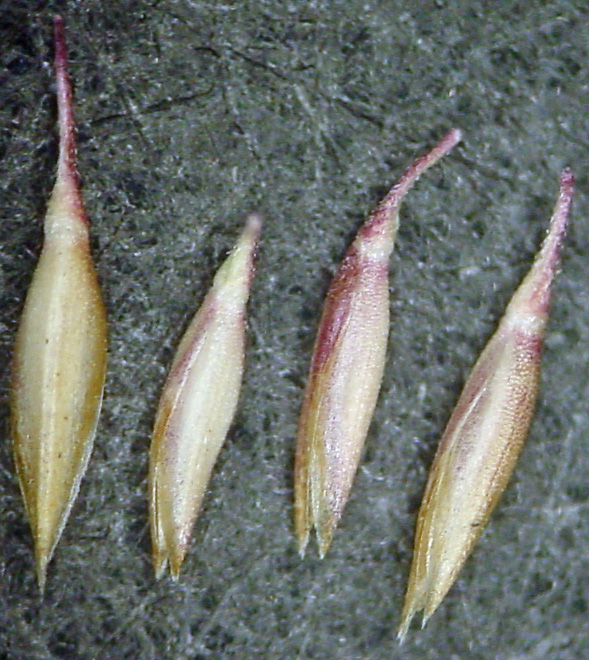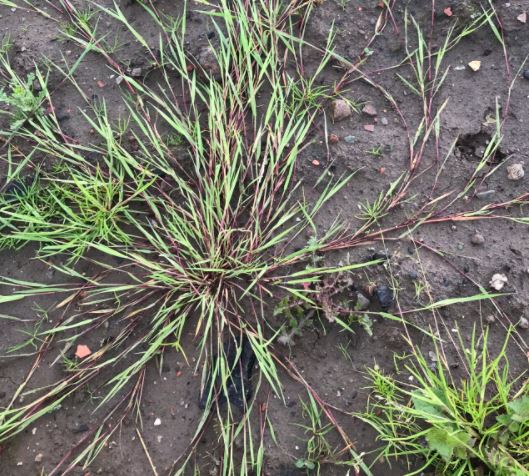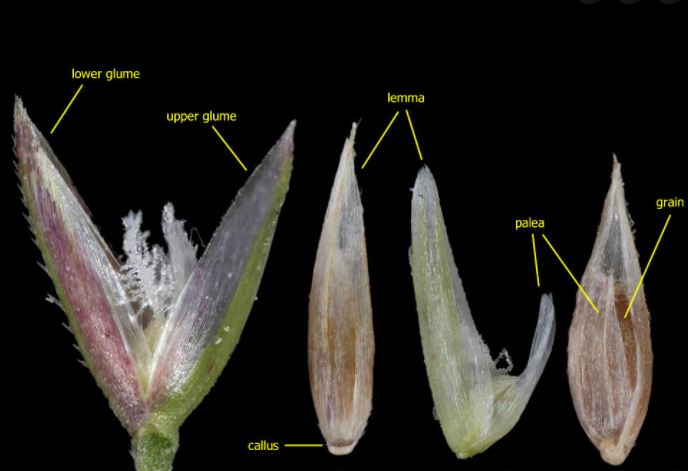Genera of Poaceae. Agrostis. When you see a grass with a big open panicle like this (left) with tiny spikelets that look as if they might contain just 1 floret (right), your mind should turn to the genus Agrostis. 



Agrostis is fiddly because the flowers are so small and tricky because it is essential that you bring back the underground parts from the field. You need to dissect the spikelt and expose the lamma and, crucially, the palea 

Then, with some carefully cleaned underground parts, you need to say whether the plant has rhizomes (left) or stolons (right). 



The purpose of dissecting the spikelet is so that you can establish whether the palea is large or small relative to the lemma. In Agrostis, both these tissues are flimsy and delicate, so you need to practice how to tease them aopart without tearing them. 

The key question is what constitutes a large or a small palea ? On the left is a big palea (more than 2/5 of the lemma) and on the right a small one (less than 2/5; sorry I don't have a better image for this). 



In summary, the key feature of Agrostis is that the spikelets have just one bisexual floret and nothing else. The glumes are so large that they conceal the floret entirely. Told from Polypogon (left) by the smooth surface of the glume in Agrostis (right) 



• • •
Missing some Tweet in this thread? You can try to
force a refresh





























